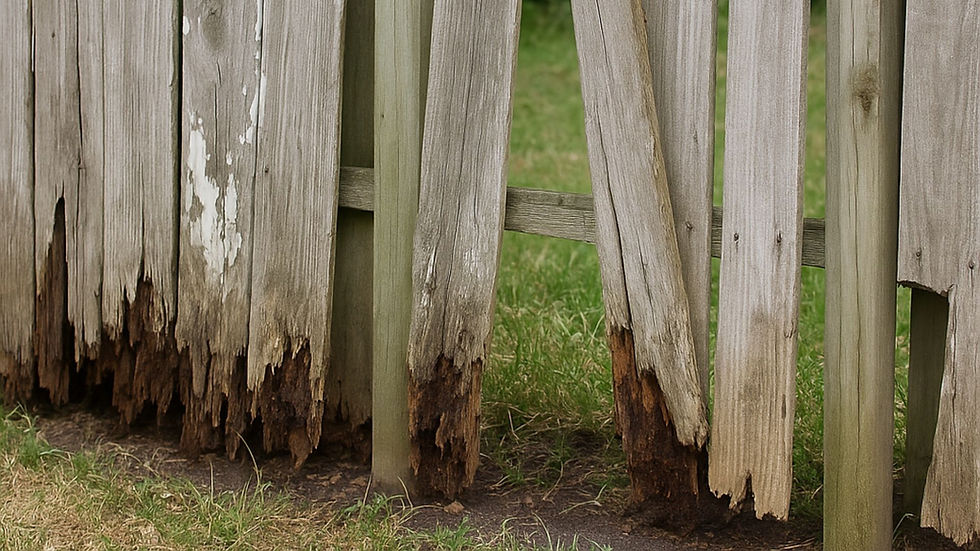How to Tell a Fence Is Old: Easy Signs Anyone Can Spot
- Vanshika Thareja

- Nov 3
- 3 min read
Updated: Nov 14
Knowing how to tell a fence is old can help you decide whether it needs simple repairs or a full replacement. An older fence doesn’t just look worn out — it can affect your home’s safety, privacy, and overall appearance. Here are the easiest signs to look for, explained in simple, clear language.
1. Visual Signs Your Fence Is Getting Old

Rotting or Decaying Wood
Wooden fences can start to rot when they stay wet for too long. Look for soft, mushy boards, mold, or dark patches. These usually mean the wood has been damaged for a while. You can learn more about how wood breaks down from the U.S. Forest Service: https://www.fpl.fs.usda.gov/
Warping, Splitting, or Cracking
Sun and rain can slowly twist or crack wood. If the boards look bent, curled, or broken, it’s a common sign of age.
Rust on Metal Fences

Metal fences don’t rot, but they can rust. Deep rust spots, pitting, or flaking metal show that the fence has been exposed to the weather for many years. For trusted info on corrosion, visit AMPP (formerly NACE International): https://www.ampp.org/
Faded Paint or Discoloration
If the fence looks dull, chalky, or patchy even after cleaning, the material may be too worn to restore.
2. Structural Signs of an Aging Fence
Leaning or Sagging
A leaning fence or one that sags in the middle is usually weak or damaged at the base. This is a strong indication that it’s getting old.
Loose or Wobbly Posts
Fence posts should feel solid. If they wobble or move, the fence structure is no longer stable.
Broken or Missing Panels
One broken panel can be repaired, but if several are damaged or missing, the whole fence may be too old to fix properly.
3. Performance and Maintenance Signs
Frequent Repairs
If you’re constantly fixing parts of your fence, the material might be too worn out. Sometimes replacing the fence is cheaper than repairing it over and over.
Less Privacy or Security
Gaps, loose slats, or shifting boards make the fence less effective. These problems usually happen when the fence is near the end of its life.
4. How Age Affects Fence Lifespan
Different fence materials last for different amounts of time:
Wood: 10–20 years
Vinyl: 20–30+ years
Chain-link: 15–20 years
Aluminum or steel: around 30+ years
If your fence is already at or past its expected lifespan, age alone could explain many of the problems you’re seeing. For more details on fence types and longevity, check out Home Depot’s guide: https://www.homedepot.com/c/ab/types-of-fences
Helpful Video: Learn What to Look For
This video clearly explains how to tell if your fence needs replacing:
Final Thoughts
Learning how to tell a fence is old doesn’t have to be complicated. If you notice rot, rust, leaning posts, faded paint, or frequent repair issues, these are all strong clues that your fence has reached the end of its lifespan. Understanding these signs early can help you decide whether to repair or replace your fence and keep your home safe and attractive.
If you'd like, I can also add SEO keywords, create a meta description, or format this for your website.



Comments